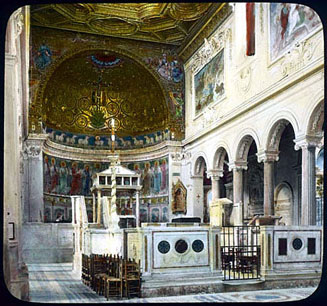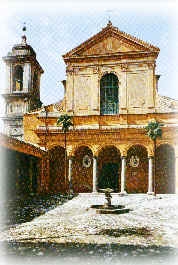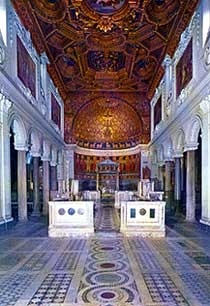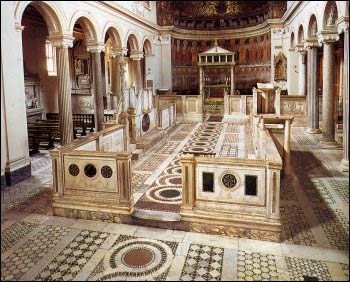
Preface
Abbreviated Sources
and References
Annotations:
title,
epigraph and
dedication
Part I
Part II
Part III![]()
 |
|||
—A nice .
. . place of worship! The illustration pinioned by her gaze was
captioned Il Tempio di Mitra. —Look at it! a dirty little
underground cave, no place to kneel or even sit down, unless you
could call this broken stone bench a pew? She got her breath when
he interposed, —But . . . —And the altar! look at it,
look at the picture on it, a man . . . god? and it looks like a
bull! —Yes, a pagan temple, they’ve excavated and found the basilica of Saint Clement was built right over a temple where worshipers of.... —Pagan indeed! And I suppose you couldn't resist setting foot inside yourself? The Recognitions, p. 38 |
|||
 |
The Basilica of St. Clemente in Rome (12th century) is situated in the Via San Giovanni between the Coliseum and St. John Lateran's. |  |
Its ground plan keeps to the one of the 4th century basilica, which can be reached through a door on the right side of the 12th century basilica (north nave, a staircase was built in 1886, when the older basilica was discovered). |
 |
The Mithraeum is accessable through a door at the end of the south nave of the 4th century basilica (N on the plan at the top of the Mithraeum page). In relation to the 12th century basilica, the Mithraic "Triclinium" is behind the apse on the subterranean level. Thus to visit the Mithraeum is to descend through the centuries, from the 12th to the 4th to the 1st century BCE. | ||